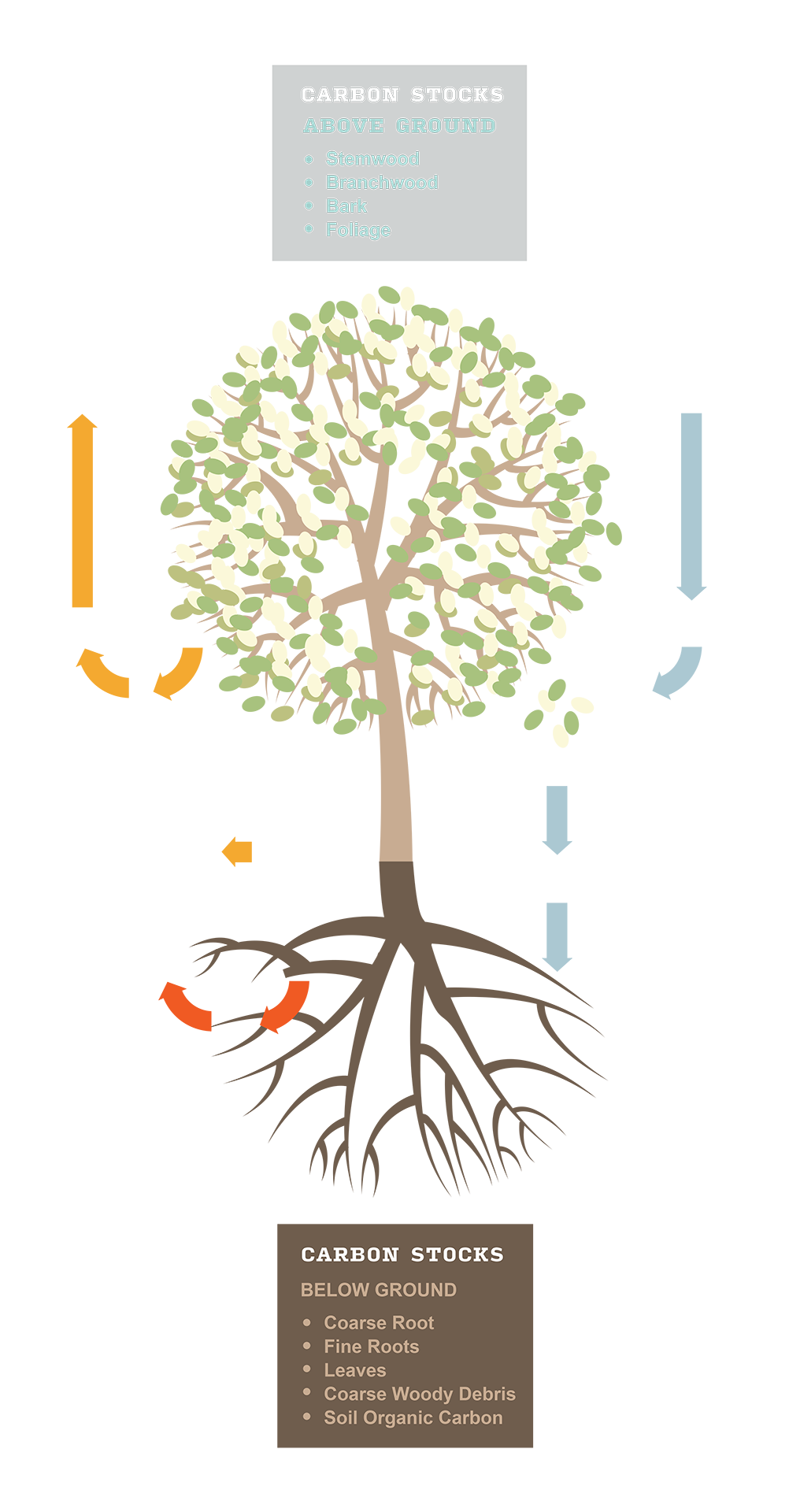Planting trees (in the right place!) is perhaps the best and most cost effective way of combating the effects of climate change as trees breathe out oxygen while also capturing carbon from the atmosphere. A conifer tree will absorb 1 tonne of carbon dioxide over a 40 year period which is equivalent to the carbon emissions of driving from Dublin to Hong Kong.
Woodlands have a great ability to stabilise the soil and prevent erosion. A mature oak tree can drink between 200 – 300 litres of water per day which helps land cope with heavy rain and flooding. Farm runoff contains up to 88 percent less nitrate and 76 percent less phosphorus after flowing through a forest which helps keep our rivers and stream pure.
Net Carbon Exchange
Trees absorb and sequester the greenhouse gas (GHG), carbon dioxide (C02), from the atmosphere through the process of photosynthesis. The carbon is stored in the wood, branches, bark and leaves and also through the soil in the roots and from leaves falling.
The amount of C02 sequestered depends on a number of factors which include: the soil type, the species planted and the age of the trees. If the mix is correct (right trees, right place and right age!) then the trees act as a carbon sink which means that they absorb more GHG from the atmosphere than they emit.

CARBON STOCKS
ABOVE GROUND
- Stemwood
- Branchwood
- Bark
- Foliage
For example trees planted on a bog or very peaty soil will have lower growth and act as a carbon contributor and release GHG to the atmosphere as respiration occurs and from decomposition of leaves.
Therefore it is essential that trees planted with the intention of optimising their effect on climate change need to be planted in accordance with best management practices before the trees are planted, during the life of the trees and at harvesting.

BELOW GROUND
- Coarse Root
- Fine Roots
- Leaves
- Coarse Woody Debris
- Soil Organic Carbon
Planting trees (in the right place!) is perhaps the best and most cost effective way of combating the effects of climate change as trees breathe out oxygen while also capturing carbon from the atmosphere. A conifer tree will absorb 1 tonne of carbon dioxide over a 40 year period which is equivalent to the carbon emissions of driving from Dublin to Hong Kong.
Woodlands have a great ability to stabilise the soil and prevent erosion. A mature oak tree can drink between 200 – 300 litres of water per day which helps land cope with heavy rain and flooding. Farm runoff contains up to 88 percent less nitrate and 76 percent less phosphorus after flowing through a forest which helps keep our rivers and stream pure.
Net Carbon Exchange
Trees absorb and sequester the greenhouse gas (GHG), carbon dioxide (C02), from the atmosphere through the process of photosynthesis. The carbon is stored in the wood, branches, bark and leaves and also through the soil in the roots and from leaves falling.
The amount of C02 sequestered depends on a number of factors which include: the soil type, the species planted and the age of the trees. If the mix is correct (right trees, right place and right age!) then the trees act as a carbon sink which means that they absorb more GHG from the atmosphere than they emit.
For example trees planted on a bog or very peaty soil will have lower growth and act as a carbon contributor and release GHG to the atmosphere as respiration occurs and from decomposition of leaves.
Therefore it is essential that trees planted with the intention of optimising their effect on climate change need to be planted in accordance with best management practices before the trees are planted, during the life of the trees and at harvesting.
